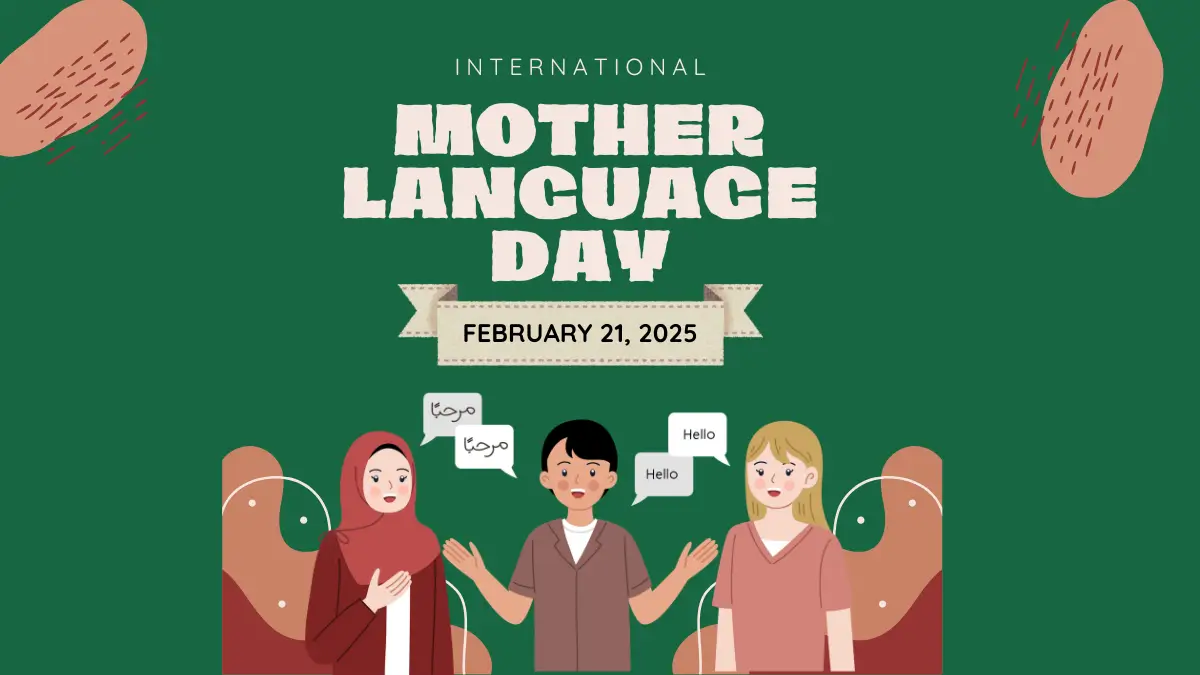International Mother Language Day is observed annually on February 21st. This day serves as a reminder of the importance of linguistic and cultural diversity and the need to protect endangered languages worldwide.
2025 Theme: Silver Jubilee Celebration of International Mother Language Day
The 25th anniversary of International Mother Language Day celebrates a quarter-century of efforts to preserve linguistic diversity and promote mother tongues. This milestone emphasizes the importance of language preservation in safeguarding cultural heritage, improving education, and fostering more peaceful societies.
History of International Mother Language Day
Origins and Proclamation
The idea to celebrate International Mother Language Day originated in Bangladesh, where the language movement of 1952 played a crucial role in advocating for the recognition of Bengali as an official language. On November 17, 1999, UNESCO officially proclaimed February 21st as International Mother Language Day to promote linguistic diversity and multilingualism.
United Nations Endorsement
In 2002, the United Nations General Assembly welcomed the proclamation of International Mother Language Day. Later, in 2007, the UN General Assembly adopted Resolution A/RES/61/266, which called on member states to promote the preservation and protection of all languages. Additionally, the year 2008 was declared the International Year of Languages, with UNESCO leading efforts to foster multilingualism worldwide.
Significance of International Mother Language Day
Preserving Linguistic and Cultural Heritage
Languages are essential carriers of identity, tradition, and history. The loss of a language leads to the disappearance of unique cultural expressions, indigenous knowledge, and traditional practices. This day raises awareness about the urgent need to document, revitalize, and protect endangered languages.
Promoting Multilingual Education
Mother tongue-based multilingual education improves learning outcomes, preserves native languages, and promotes inclusive and quality education. By incorporating local languages into educational systems, linguistic diversity can be sustained across generations.
Enhancing Social Integration and Inclusion
Linguistic diversity fosters social cohesion, respect for cultural differences, and inclusive societies. Ensuring that all languages have space in public discourse, governance, and technology helps create equitable opportunities for all linguistic communities.
Encouraging Digital Inclusivity
The digital revolution has highlighted the digital divide in language representation. Less than a hundred languages are significantly used in the digital world. Increasing linguistic representation in digital platforms, AI tools, and online education is essential to safeguard linguistic diversity in the modern era.
Summary of International Mother Language Day 2024
| Topic | Details |
|---|---|
| Why in News? | International Mother Language Day is observed annually on February 21 to promote linguistic and cultural diversity. |
| Theme for 2024 | Silver Jubilee Celebration of International Mother Language Day |
| Origins & Proclamation | Originated in Bangladesh’s 1952 language movement; UNESCO proclaimed February 21 as International Mother Language Day in 1999. |
| UN Endorsement | In 2002, the UN General Assembly welcomed the day. In 2007, Resolution A/RES/61/266 promoted language preservation. 2008 was declared the International Year of Languages. |
| Significance | – Preserving Heritage: Protects endangered languages and cultural identity. – Multilingual Education: Enhances learning and sustains linguistic diversity. – Social Inclusion: Strengthens cultural respect and equitable opportunities. – Digital Inclusivity: Expands linguistic representation in AI, technology, and online education. |



 National Energy Conservation Day 2025: M...
National Energy Conservation Day 2025: M...
 International Day Against Colonialism in...
International Day Against Colonialism in...
 International Day of Neutrality (12 Dece...
International Day of Neutrality (12 Dece...







